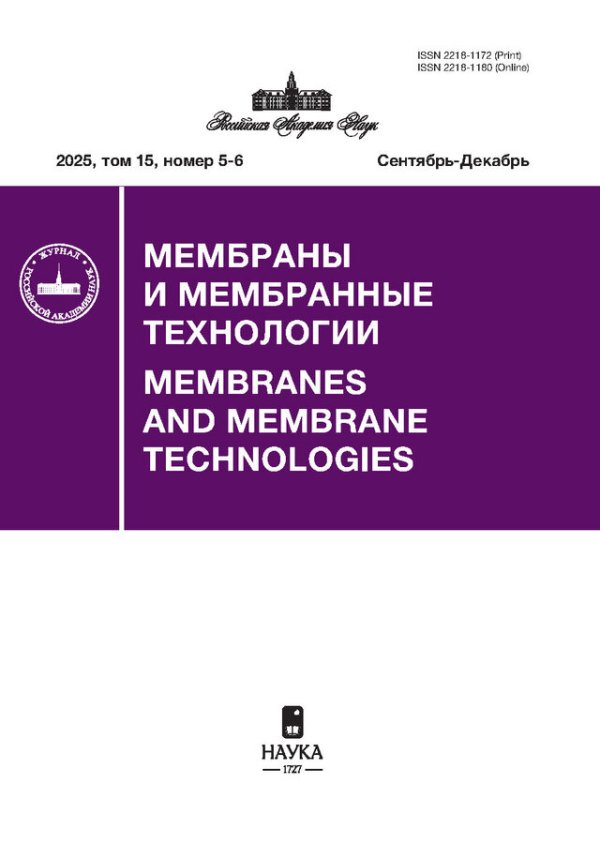Гибридная технология опреснения морской воды на основе методов обратного осмоса и мембранной дистилляции
- Авторы: Ахмедова Д.А.1
-
Учреждения:
- Азербайджанский государственный университет нефти и промышленности
- Выпуск: Том 13, № 2 (2023)
- Страницы: 96-109
- Раздел: Статьи
- URL: https://journals.rcsi.science/2218-1172/article/view/137991
- DOI: https://doi.org/10.31857/S2218117223020025
- EDN: https://elibrary.ru/HYTHEF
- ID: 137991
Цитировать
Полный текст
Аннотация
В статье приведены результаты расчетно-аналитического исследования гибридных ОO–MД (Обратный осмос–Мембранная дистилляция) технологий опреснения воды Каспийского моря, предусматривающих получение дополнительного количества опресненной воды методом МД из концентратов ОО, нагретых до 50–80°C за счет бросового тепла продуктов сгорания топлива в паровых котлах. Изучены два варианта решения проблемы образования осадков СаСO3 и СаSO4 на мембранах: с предварительной нанофильтацией (НФ) или Na-катионированием (Na) морской воды, как альтернативы использованию антискалантов (АС) и кислоты. Учтен негативный экологический эффект большинства АС (эвтрофикация водоемов) и их низкая эффективность при высоких степенях концентрирования опресняемой воды. В качестве критериев выпадения отложений на мембранах использованы индекс Ланжелье (СаСO3) и степень насыщения концентрата (СаSO4). Процессы НФ и ОО исследованы с использованием компьютерной программы ROSA, а МД и Na – путем компьютерной симуляции соответствующих расчетных моделей. Установлено, что при 70%-ом выходе пермеата на стадиях НФ и ОO возможность образования кальциевых осадков на мембранах ОO и MД предотвращается, но прогнозируется их выпадение на мембранах НФ, что делает вынужденным использование АС. При этом, дополнительная выработка пермеата на стадии MД из концентратов ОO достигает 40% от количества пермеата cтадии ОO, а расход электроэнергии в целом по схеме составляет – 1.88 кВт час/м3. Снижение кальциевой жесткости морской воды до 50 мкг-экв/дм3 методом Na-катионирования позволяет отказаться как от применения АС, так и подкисления серной кислотой с дополнительной выработкой пермеата МД – 27% относительно пермеата ОО. Расход электроэнергии повышается до 2.5 кВт ч/м3. Для использования известных достоинств НФ без применения АС предложена гибридная схема Na–НФ–ОO–MД. Установлено, что при 80%-ых выходах пермеатов НФ и ОO, для предотвращения образования осадков СаSO4 на всех стадиях обработки достаточно снизить жесткость морской воды с 16 до 5.5 мг-экв/дм3, а подкислением умягченной воды исключить образование осадков СаСO3.
Ключевые слова
Об авторах
Д. А. Ахмедова
Азербайджанский государственный университет нефти и промышленности
Автор, ответственный за переписку.
Email: ahmedova_cahan1975@mail.ru
Азербайджан, 1000, Баку
Список литературы
- Curto D., Franzita V., Guercio A. // A Review of the Water Desalination Technologies. Appl. Sci. 2021. V. 11. P. 670.
- Salinas-Rodriguez S.G. et al. // Seawater Reverse Osmosis Desalination. Assessment and Pre-treatment of Fouling and Scaling. IWA PABLISHING. London. 2021. P. 301.
- Elmesmary M.M. et al. // Hybridization of desalination processes. Int. J. Eng. Res. and Appl. 2017. V. 7. Issue 4. P. 41–44.
- Parisa Biniaz et al. // Water and Wastewater Treatment Systems by Novel Integrated Membrane Distillation. ChemEngineering. 2019. V. 3. P. 8. 10.3390
- Daniel Gonzalez et al. // Membrane Distillation: Perspektives for sustainable and improved desalination. Renewable and Sustainable Energy Reviews. 2017. V. 80. P. 237–259.
- Anton A. Kiss, Olga M. Kattan Readi // An industrial perspective on membrane distillation processes. J. Chem Technol Biotechnol. 2018. V. 93. P. 2047–2055.
- Jantaporn Waritha et al // Specific energy requirement of direct contact membrane distillation. Chemical Engineering Research and Design. 2017. V. 128. P. 15–26.
- Feiner M. et al. Increased RO concentrate toxicity following application of antiscalants–acute toxicity tests with the amphipods Gammarus pulex andGammarus roeseli, Environmental Pollution. 2015. V. 197. P. 309–312.
- Konstantin Popov et al. A Comparative Performance Evaluation of Some Novel (Green) and Traditional Antiscalants in Calcium Sulfate Scaling. Advances in Materials Science and Engineering, 2016. P. 1–10.
- Пантелеев А.А., Рябчиков Б.Е., Хоружий О.В. // Технологии мембранного разделения в промышленной водоподготовка. М.: ДеЛи плюс, 2012. С. 429.
- Dong Zou et al. // Development of lower cost seawater desalination process using NF technologies — A review. J. Desalination. 2015. V. 376. P. 109–116.
- Bassel A. et al. // Nanofiltration as Preatreatment Step in Seawater Desalination: A Review. Arabian J. For Science and Engineering. 2000. V. 43(9). P. 4413–4432.
- Фейзиев Г.К. // Высокоэффективные методы умягчения, опреснения и обессоливания воды. Изд. 2-е. Баку: “Тахсил” ТПП, 2009. С. 442.
- Карелин Ф.Н. // Обессоливание воды обратным осмосом. М.: Стройиздат, 1988. С. 208.
- Martin Futterlieb et al. // Limits of High Recovery Inland Desalination: Closed-Curcuit Reverse Osmosis-a Viable Option? Chem. Ing. Tech. 2021. V. 9. P. 1–11.
- Hussam Jouhare et al. // Waste heat recovery technologies and applications. Thermal Science and Engineering Progress. 2018. V. 6. P. 268–289.
- www.rosa9.software.informer.com.
- Рудобашта С.П., Махмуд С.Ю. // Математическое моделирование процесса мембранной дистилляции. Химия и химическая промышленность. 2012. Т. 55. С. 100–103.
- Khalifa A. et al. // Experimental and theoretical investigation on water desalination using direct contact membrane distillation. Desalination. 2017. V. 404. P. 22–34.
Дополнительные файлы
















